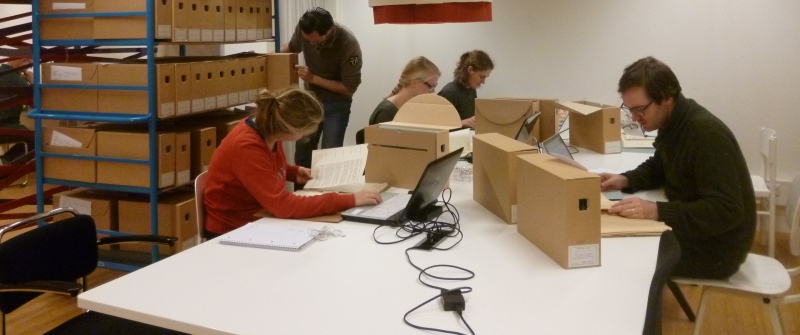
07 Jan Blog: Secrets of the Deep Sea: An ocean of archives for us to explore
Lotte Akkerman, Kimberley Bootsma, and Bente de Leede reflect on a public symposium held at the National Archives about the KITLV project Dutch Military Operations in Indonesia, 1945-1950. They explain that new information is not as elusive as commonly thought.
The goal of the symposium was to provide the general public with a glimpse behind the scenes of the project and to present what has been found in the archives so far. The presentations showed that information about these dark pages of Dutch history is not unavailable or deliberately hidden in the archive, as was suggested recently by De Correspondent. There is a lot to be found, if only you know where to look and, perhaps more importantly, how to look.
Where to look: an archive without walls
By now the National Archives have given public access to many military records from the period, including those that contain references to violence committed by Dutch troops in Indonesia. Harry Poeze showed that even a brief survey of records with limited access, such as the NEFIS Intelligence files, yields a lot of new information. As Nico van Horn rightly pointed out, this is not to say that all government sources are publicly available: some are restricted until 2046. While this is definitely a point of discussion, many sources are waiting to be studied. This was emphasized by Tom van den Berge, who encouraged the audience to visit the archives themselves.
How to look: the language of war
Scott Kannekens and Maarten Manse’s case studies about chaplains who smuggle weapons proved beyond a shadow of a doubt that the archives contain interesting stories. The majority of the material however, like situation reports of military actions, does not immediately appear to contain any information about violent or subversive acts. This does not mean that these sources are covering up war crimes, and are therefore useless for our research. It means that we could change how we look. Christiaan Harinck convincingly argued that we can detect acts of violence by critically scrutinizing and reflecting on military jargon, culture and customs. Examples include the euphemistic description of ‘being shot on the run’ (‘op de vlucht neergeschoten’), which often refers to the (illegitimate) execution of prisoners, and the usage of the term ‘put down’ (‘neerleggen’) for killing someone.
Cross-reference
Another innovative way of studying these sources was introduced by Lotte Akkerman. She showed how cross-referencing between different types of sources, for example military reports and ego-documents can provide useful information about specific acts of violence, the perspectives of soldiers and the reliability of formal records. Cross-referencing was also discussed at an earlier event where Bart Luttikhuis talked about his comparative research in Dutch sources in The Hague and Indonesian sources from the National Archives in Jakarta.
The presentations at this symposium clearly demonstrated that the National Archives are not hiding documents. They are not, as Tom van den Berge poetically put it, an ocean of secrets. With careful research we should be able to find more. The information is there: we just need to dive deeper.




No Comments